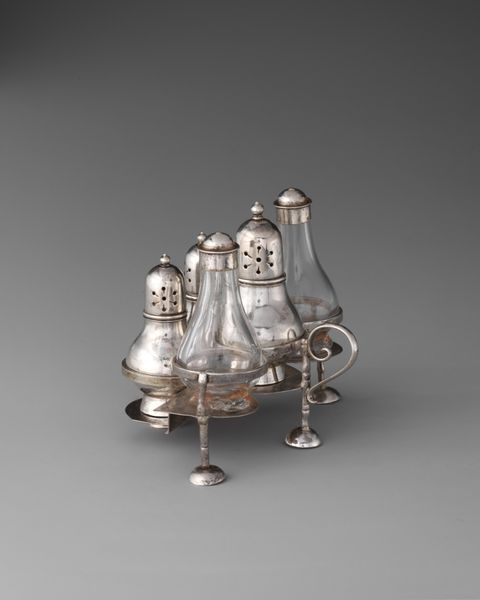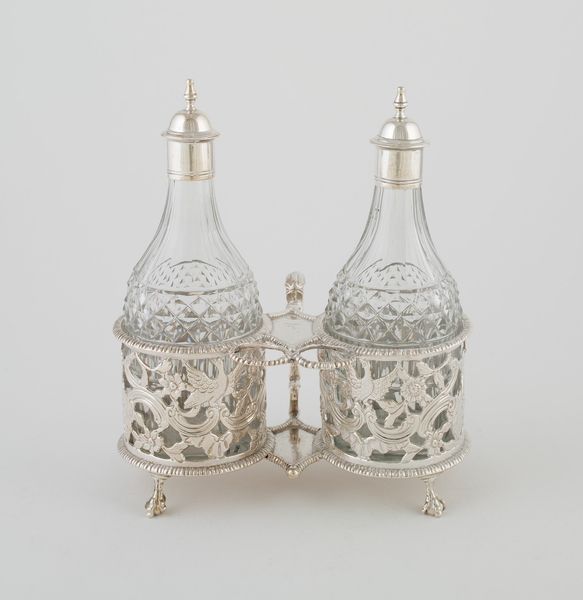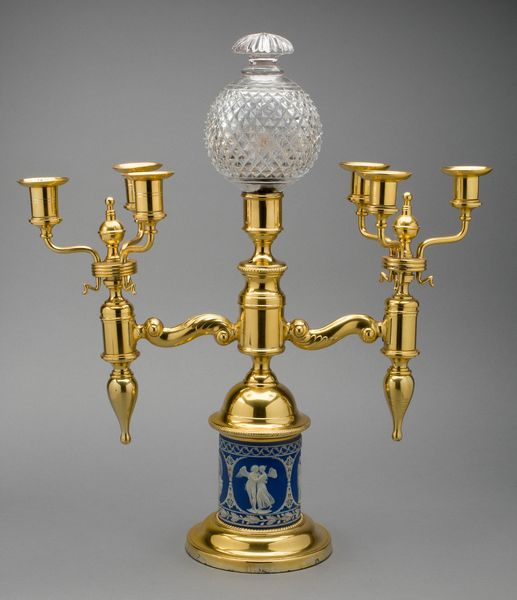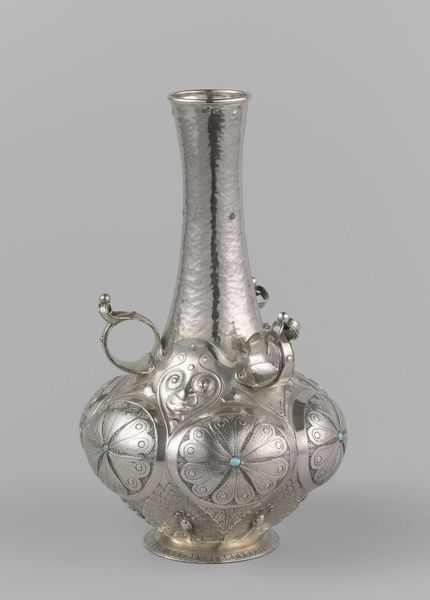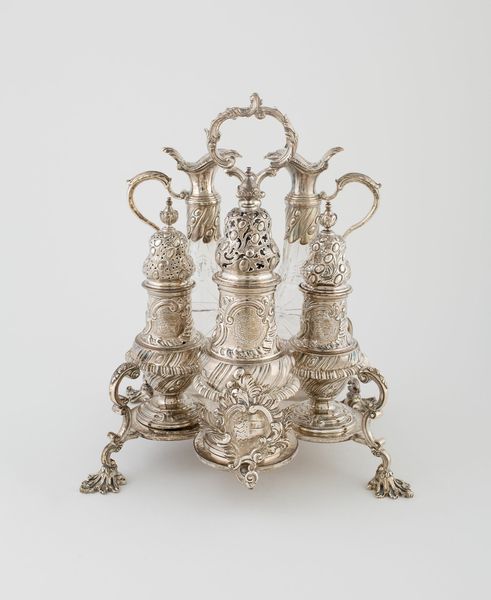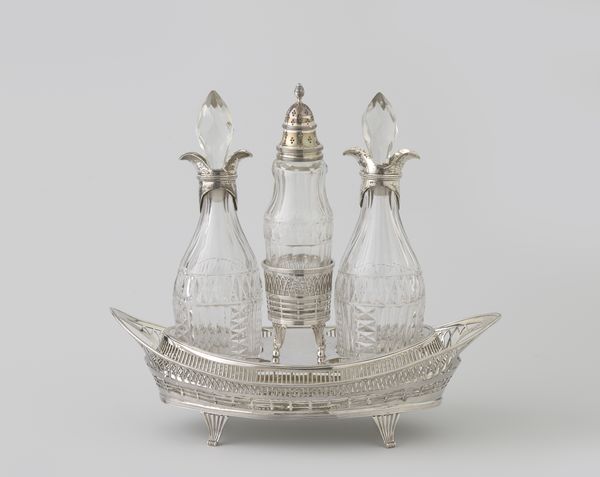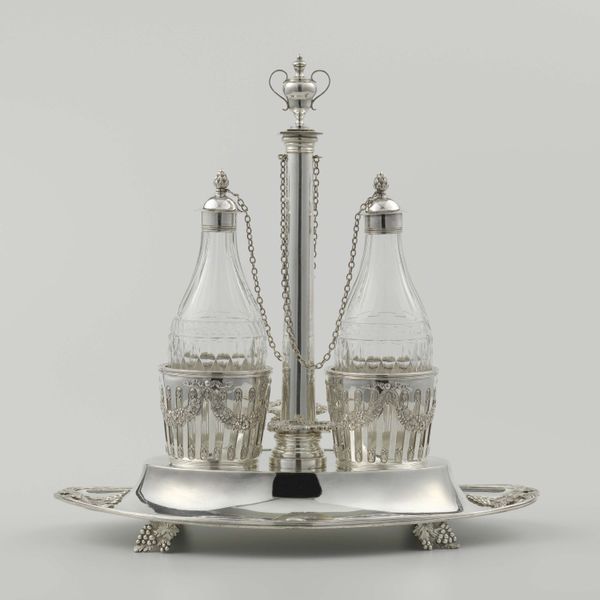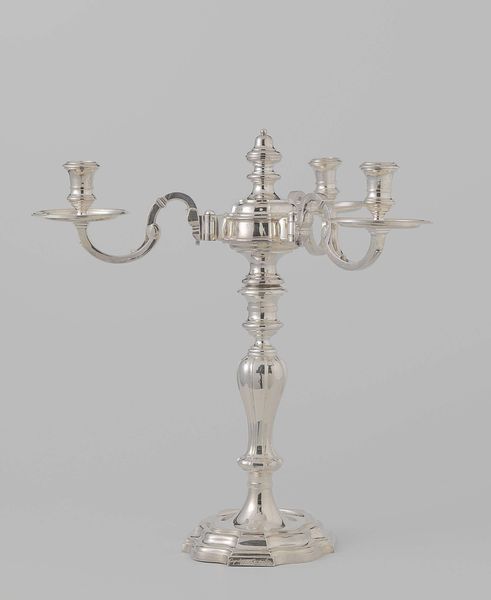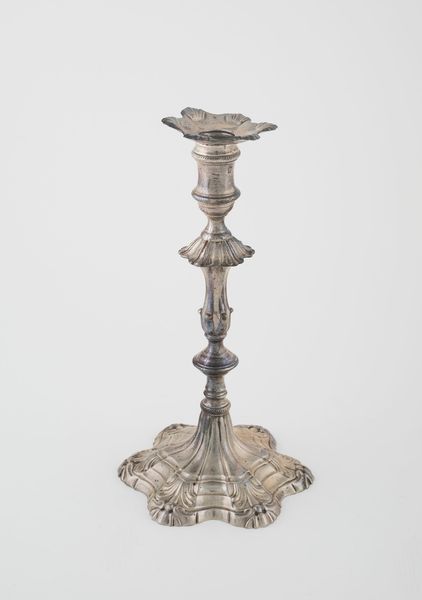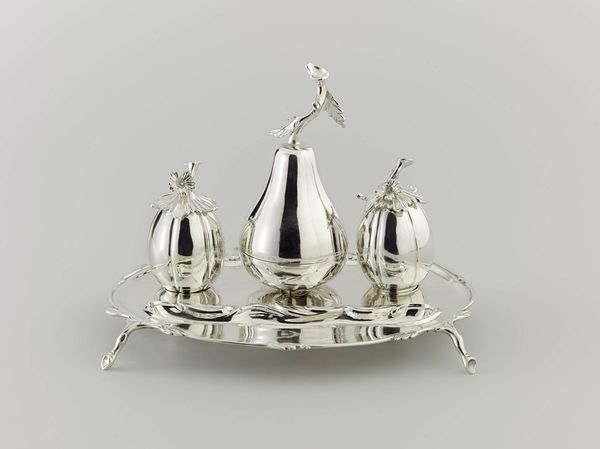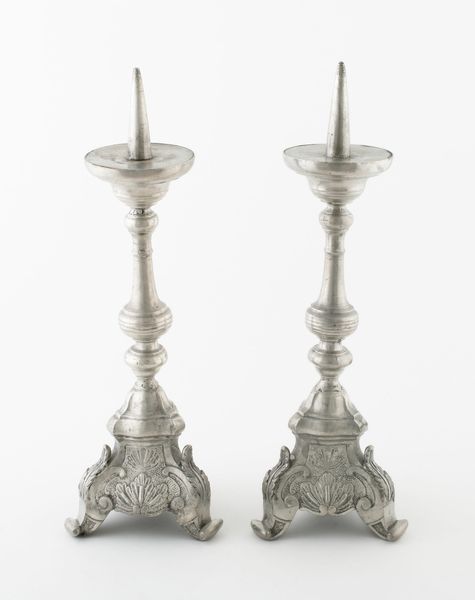
Specerijenservies, bestaande uit een blad met afschroefbare houder, oliekan, twee strooiers, waarvan één met ronde, de ander met ruitvormige gaten in het deksel, en een zoutvat. 1642
0:00
0:00
silver, metal, sculpture
#
silver
#
baroque
#
metal
#
sculpture
#
decorative-art
Copyright: Rijks Museum: Open Domain
This condiment set was made from silver by Anthonie Grill in the 17th century. Silver is a soft, precious metal. It demands specialized skills to transform it into elegant forms such as these. The suite comprises a tray with screw-on mounts, an oil jug, two sprinklers, and a salt cellar. All are fabricated in an elaborate, repetitive, lobed pattern. Notice how light plays across the curved surfaces, giving the set a shimmering appearance. This would have been quite the display on a dining table, reflecting candlelight and signifying the wealth of its owner. The making of such an object would have involved specialized silversmithing techniques like hammering, casting, and chasing. Creating such luxurious objects was a complex social process, with the division of labor and access to resources reflecting the rigid class structure of the time. The next time you encounter an object like this, consider not just its aesthetic appeal, but also the social and economic systems that made its creation possible.
Comments
No comments
Be the first to comment and join the conversation on the ultimate creative platform.
